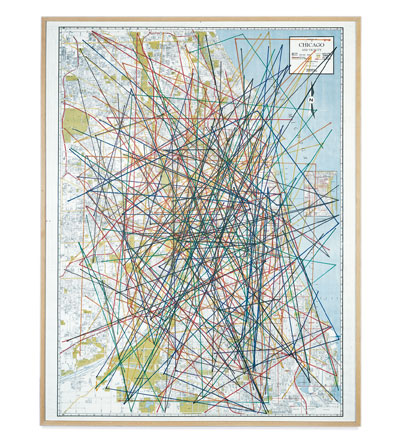
John Cage, A Dip in the Lake, 1978.
John Cage has been an important figure on the landscape of the Museum of Contemporary Art Chicago since literally the beginning: he performed at the opening of the institution’s first-ever exhibition in 1967. In the decades that followed, Cage and the MCA enjoyed a fruitful working relationship, with the artist creating and performing scores on-site and the museum hosting performances of his works over the decades, continuing after his death in 1992 and into the present day.
If only just for those performances, MCA would be a precious keeper of Cage’s legacy. But the museum has more: the material results of its long association with the artist can be seen in MCA DNA: John Cage, a multimedia exhibition opening September 1st of photographs, letters, performance, video, and Cage’s idiosyncratic scores, the most famous of which is created on a large map of Chicago. The exhibit seeks to make Cage’s scores come alive again, with displays and materials that demonstrate how to interpret them. Elsewhere the artist’s influences, such as books he kept, sit next to notes he wrote and archival papers documenting his time at MCA. The exhibit mixes art with archive and creative with strictly professional, and keeps the close link to the MCA as a central element throughout. As site-specific as a Cage performance and equally unpredictable, MCA DNA: John Cage is a snapshot of an extraordinary artist’s process.




 Facebook
Facebook Permalink
Permalink Digg
Digg Reddit
Reddit LinkedIn
LinkedIn StumbleUpon
StumbleUpon Tumblr
Tumblr

